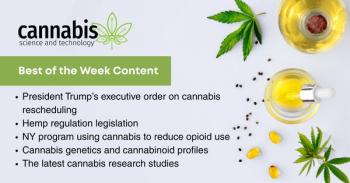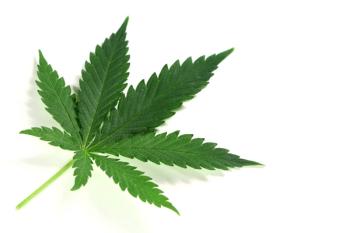
Cannabis Science Conference Spring Keynote Coverage: The Science of Smokeability: Insights on Cultivation and Post-Harvest Techniques to Enhance the Quality of the Smoking Experience
Drs. Allison Justice and Riley Kirk presents their keynote speaker presentation on Day 2 of the Cannabis Science Conference in Kansas City, Missouri, about the study they are conducting regarding the smokeability of cannabis.
On Day 2 of the Cannabis Science Conference which took place in Kansas City, Missouri, Drs. Allison Justice and Riley Kirk excitedly delved into their keynote presentation titled, “The Science of Smokeability: Insights on Cultivation and Post-Harvest Techniques to Enhance the Quality of the Smoking Experience”.
Dr. Allison Justice, Founder and CEO of Hemp Mine, and Dr. Riley Kirk, Co-Founder of Network of Applied Pharmacognosy, began their presentation by explaining how cannabis is currently cultivated to maximize yield and cannabinoid content. Attendees were surprisingly shocked to learn that there has never been a study that evaluated cultivation practices or post-harvest processing, which is the drying and curing process, on how they might impact the smokeability of the final product. Kirk and Justice then decided it was time for educational research on the science of smokeability (SOS).
As they went over the building blocks of their talk, Dr. Allison Justice reminded those in the audience that, "Terps [terpenes] are in your nose, not your plant," which was very amusing to attendees.
"We're doing this research for our community, and that is the emphasis of who we're communicating to. We believe that cannabis consumers and especially daily cannabis, consumers are the experts on quality. They are the people who can smoke something and say, 'That's good weed. That's bad weed. This was harsh. This wasn't harsh.' They can tell the difference when they're smoking things. Hopefully we'll see some data later on," Dr. Riley Kirk said.
The two keynote speakers showcased how the tobacco industry trailblazed the science of understanding what factors are contributors to a quality, smokeable product and how the cannabis industry is lacking this basic science. From these perceptions, Drs. Riley Kirk and Allison Justice sought to bring this educational research to the industry.
When cannabis is smoked, the chemistry of the plant is altered and transforms to new active compounds, as well as changes in relative ratios. According to the presentation, up to 30% of tetrahydrocannabinol (THC) will convert to cannabinol (CBN) when it is smoked and can additionally, transform to other cannabinoids such as, cannabielsoin (CBE) and cannabitriol (CBT).
A surprising find during their study was that through increased water activity, the results showed whiter ash. "The increased water activity does produce whiter ash and that was opposite of what I thought prior to. But it is significant and it's much more significant on the very wet treatment versus the lower two," Dr. Allison Justice revealed to attendees when showcasing different samples containing varying water activity.
Dr. Riley Kirk explained, "The next phase of the study is going to be about nutrient flushing. There's a lot of opinions on nutrient flushing, but there's not a lot of data on this, especially for the smoking experience. And I've heard people say, 'you know, I smoked that weed, it feels like it hasn't been flushed.' But, is there actually ways we can quantify that are there molecules, we can look for a cannabis that has not been flushed first, and then the third phase is going to be on nitrosamines."
The keynote presentation concluded with an engaging Q&A session that was very well received by conference attendees.
In a prior interview with Cannabis Science and Technology, Drs. Allison Justice and Riley Kirk share some of the background information on their ongoing study surveying the smokeability of cannabis, please
Newsletter
Unlock the latest breakthroughs in cannabis science—subscribe now to get expert insights, research, and industry updates delivered to your inbox.




